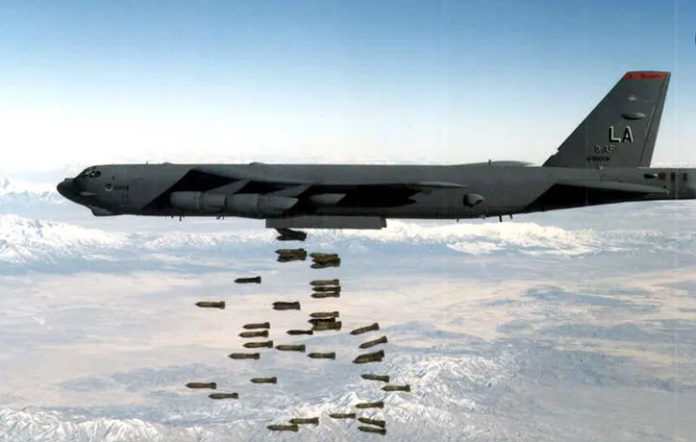Modern bomber jets represent the pinnacle of aerospace engineering, combining stealth, speed, payload capacity, and cutting-edge avionics. The evolution of these aircraft has been driven by the need for superior strategic deterrence, precision strikes, and the ability to operate in contested environments. Here’s a look at the top 10 bomber jets in the world as of 2025, ranked based on their technological capabilities, combat effectiveness, and future potential.
- Northrop Grumman B-21 Raider (USA)
The B-21 Raider is the latest stealth bomber developed for the United States Air Force (USAF). Designed to replace the aging B-1B Lancer and B-2 Spirit, it features next-generation stealth technology, extended range, and AI-assisted avionics. The aircraft is optimized for both nuclear and conventional strikes, with the ability to penetrate sophisticated air defense systems. It is expected to enter service by the late 2020s.
- Northrop Grumman B-2 Spirit (USA)
The B-2 Spirit remains one of the most advanced stealth bombers ever built. Featuring a flying wing design, it can evade radar detection and deliver nuclear and conventional payloads. Though expensive to maintain, its strategic importance remains unparalleled.
- Tupolev PAK DA (Russia)
Russia’s PAK DA, currently in development, is envisioned as a long-range stealth bomber capable of carrying hypersonic weapons. It will replace the Tu-160 and Tu-22M3 bombers, leveraging a flying wing design similar to the B-2 Spirit.
- Tupolev Tu-160M2 (Russia)
The upgraded Tu-160M2 is an improved version of the Cold War-era Tu-160. It boasts advanced avionics, electronic warfare systems, and extended operational range, making it Russia’s premier supersonic strategic bomber.
- Rockwell B-1B Lancer (USA)
Despite its age, the B-1B Lancer remains a formidable long-range bomber. With a variable-sweep wing design, it can reach supersonic speeds and carry a massive payload, including precision-guided munitions.
- Xian H-20 (China)
China’s H-20 is expected to be a game-changer in strategic bombing. It is anticipated to feature advanced stealth, extended range, and the ability to deliver nuclear and conventional payloads deep into enemy territory.
- Tupolev Tu-22M3M (Russia)
The Tu-22M3M is a modernized version of the Tu-22M3, featuring improved avionics, radar systems, and precision-guided missile capabilities. It plays a critical role in Russia’s tactical and strategic bombing operations.
- Boeing B-52H Stratofortress (USA)
The legendary B-52H, first introduced in the 1950s, continues to serve as a backbone of the USAF’s bomber fleet. Modernized with advanced electronics and weaponry, it remains a highly effective platform for strategic operations.
- Dassault Rafale F4 (France) – Tactical Bomber Variant
While primarily a multirole fighter, the Rafale F4 variant is equipped with advanced strike capabilities, making it a formidable tactical bomber. It carries nuclear-capable ASMP-A missiles, enhancing France’s strategic deterrence.
- Su-34 Fullback (Russia)
The Su-34 is a tactical bomber with exceptional maneuverability and survivability. Designed for deep-strike missions, it boasts heavy payload capacity, modern avionics, and electronic warfare capabilities.
Conclusion
The evolution of bomber jets continues to shape global military strategies. While stealth and electronic warfare capabilities dominate future designs, legacy bombers remain critical with modernization programs. The coming decades will see further advancements in hypersonic weapon integration, AI-assisted operations, and next-gen stealth technologies, redefining the role of bombers in modern warfare.








